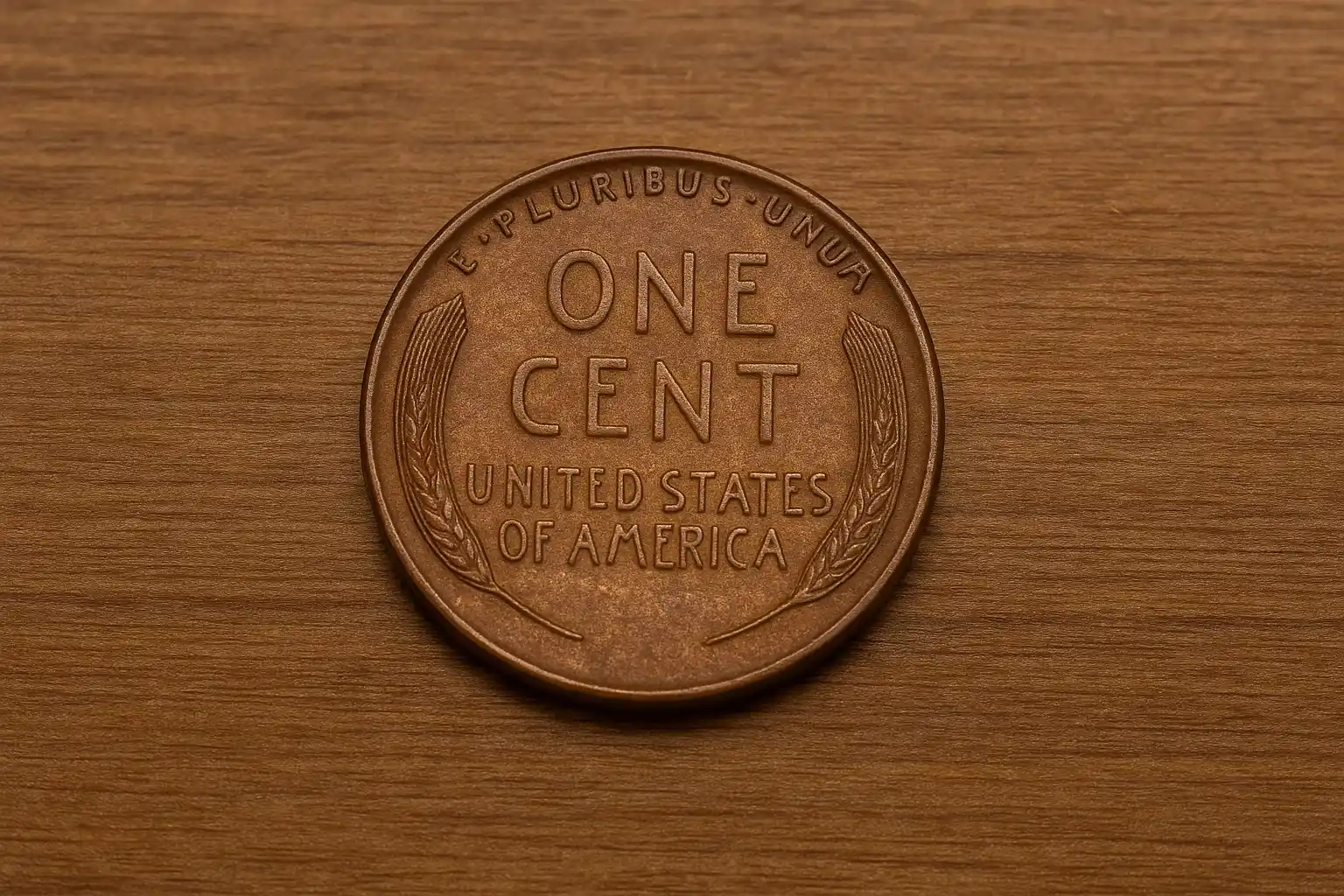The 1946 Wheat Penny: History & Basics
The 1946 Wheat Penny is part of the long-running Lincoln Wheat Cent series (1909–1958). After World War II ended, the U.S. Mint resumed using the standard copper-zinc alloy (95% copper, 5% zinc) for cents. The design features Abraham Lincoln’s bust on the obverse (front), and two stylized wheat ears framing the “ONE CENT” inscription on the reverse (back).
Production in 1946 came from three mints:
Philadelphia (no mint mark)
Denver (marked “D”)
San Francisco (marked “S”)
Over 1.5 billion pieces were minted in total, making 1946 one of the more abundant years in the Wheat Penny series.
What Affects Its Value
Several factors influence the 1946 wheat penny value:
Mint mark & rarity of mint
The “S” (San Francisco) mint tends to have slightly fewer surviving high-grade examples, so coins from that mint often carry a small premium over the more common Philadelphia and Denver versions.

Condition / grade
Everyday circulated pennies with lots of wear are usually worth only a few cents. As condition improves (with clearer detail, less wear, original surfaces, etc.), value rises. Uncirculated coins (mint state) in high grade are much more valuable.
Color / surface & eye appeal
These pennies come in different colorations: “red” (original copper luster), “reddish-brown,” and “brown” (oxidized). Red or red-brown examples tend to fetch higher prices among collectors.
Errors and varieties
Some 1946 pennies exhibit minting errors: doubled dies, repunched mintmarks, off-center strikes, or other anomalies. These varieties may be rare and command premiums well above standard examples.
Value Ranges (Estimates)
Here are rough estimates for what 1946 Wheat Pennies tend to sell for, depending on mint mark and condition. Values are approximate and depend heavily on current market demand and the coin’s precise condition.
Mint Mark | Circulated / Low Grade | Uncirculated / Mid Grade | High-Grade / Special Varieties |
Philadelphia (no mark) | ~$0.05 to $0.50 | $5 to $20 or more | Very well preserved red MS coins may reach a few hundred dollars or more |
Denver (“D”) | ~$0.10 to $0.30 | $5 to ~$30–$40 in better uncirculated grades | High collectible examples or error varieties can climb higher |
San Francisco (“S”) | ~$0.10 to ~$0.50 | $10 to ~$40 or more for higher uncirculated condition | Rare high-grade or special-variety specimens may be significantly more |
In rare cases (especially for top grade “red” specimens or well authenticated error/variety coins), values may go into the low hundreds or beyond.
How to Evaluate Your 1946 Wheat Penny
When you have one in hand:
Check the mint mark (if any) just under the date.
Examine wear: Lincoln’s hair, coat detail, wheat ears on reverse. More detail = higher grade.
Look at the color: does it retain the red or red-brown tone? Or has it darkened to brown?
Search for errors or unusual markings under magnification: doubling, off-center, etc.
Compare with known examples in reference guides and auction records. Certification by recognized grading services adds confidence and often value.
Conclusion
The 1946 Wheat Penny is generally not rare in everyday circulation, but in the right condition, mint, and with desirable color or error, it can be worth far more than its one-cent face value. For most people, finding one in typical worn condition leads to small premiums; for collectors, the opportunity lies in spotting the better examples: those uncirculated, red, or carrying unusual varieties. If you have a 1946 Penny, take time to inspect it carefully—history, condition, and rarity all combine to determine its value.

FAQ
Was the 1946 Wheat Penny ever made of steel, like the 1943 penny?
No. Only the 1943 pennies were struck in zinc-coated steel to save copper for World War II. By 1946, the Mint had returned to the pre-war bronze composition (95% copper, 5% zinc). Any “steel-looking” 1946 cent is likely a plated coin, not a Mint product.
Are there proof 1946 Wheat Pennies?
No official proof cents were struck in 1946. The Mint had suspended proof coinage during World War II (1943–1949). Any “prooflike” 1946 penny you see is just an especially well-struck uncirculated coin.
What is the most common error found on 1946 cents?
Repunched mintmarks (especially on Denver and San Francisco issues) are among the more common collectible errors. Some minor doubled dies and off-center strikes are also known, though they are scarcer.
How many 1946 Wheat Pennies were minted in total?
Combined across all three mints, production exceeded 1.5 billion coins: about 991 million from Philadelphia, 315 million from Denver, and 198 million from San Francisco. This high mintage explains why most examples are affordable today.
Can a cleaned 1946 Wheat Penny still be valuable?
Cleaning usually lowers a coin’s value. Even if the date or mintmark is desirable, visible cleaning scratches or unnatural shine will make it far less appealing to collectors. Original surfaces are always preferred.
Where is the best place to sell a valuable 1946 Wheat Penny?
For everyday examples, coin shops, flea markets, or online platforms are fine. For high-grade or rare varieties, it’s best to consign through an auction house or get certification from a grading service before selling.



